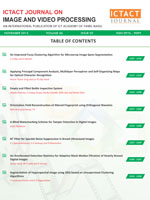Deep Learning Algorithms for Detection and Classification of Congenital Brain Anomaly
Subscribe/Renew Journal
Congenital brain anomalies are structural abnormalities that occur during fetal development and can have a significant impact on an individual neurological function. Detecting and classifying these anomalies accurately and efficiently is crucial for early diagnosis, intervention, and treatment planning. In recent years, recurrent neural networks (RNNs) have emerged as powerful tools for analyzing sequential and time-series data in various domains, including medical imaging. This research presents an overview of RNN-based algorithms for the detection and classification of congenital brain anomalies. Specifically, Long Short-Term Memory (LSTM) networks and Convolutional LSTM networks have demonstrated great potential in this domain. LSTMs excel at capturing long-range dependencies in sequential data and mitigating the vanishing gradient problem, making them well-suited for analyzing brain scans or other medical imaging sequences. Convolutional LSTM networks combine the strengths of convolutional neural networks (CNNs) and LSTMs, enabling them to extract spatial features from brain images while preserving temporal dependencies. The application of RNN algorithms in the detection and classification of congenital brain anomalies shows promising results, enabling accurate and timely identification of these abnormalities. However, further research is needed to validate and refine these algorithms, improve their interpretability, and enhance their clinical utility in real-world scenarios.
Keywords
Deep Learning, Brain Anomalies, Automation, Diagnosis, MRI.
Subscription
Login to verify subscription
User
Font Size
Information



